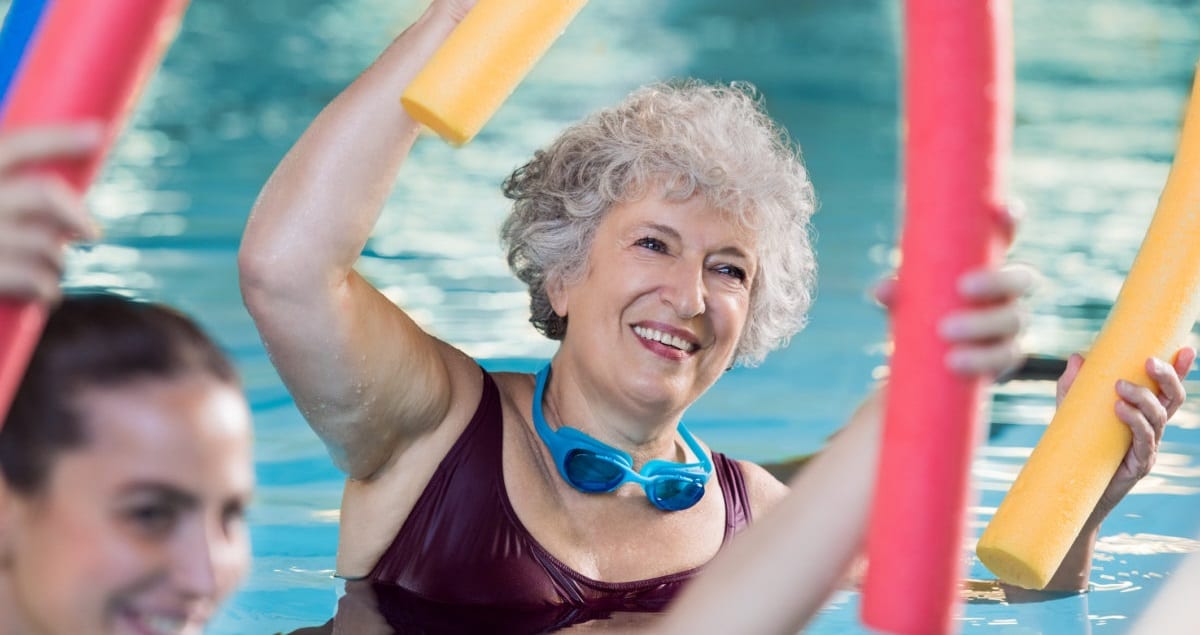Exercise plays a vital role in our lives regardless of age. However, as we grow older, certain physical activities can become more challenging or even impossible. Unfortunately, many individuals tend to give up when faced with such difficulties. It’s crucial to recognize the significance of exercise throughout our entire lives and find alternative ways to stay active. One such activity that offers both physical engagement and safety is swimming.
7 Benefits of Swimming for Seniors
Enhanced Safety and Comfort
Physical activity may seem unappealing when dealing with stiffness, soreness, or fear of injury. However, swimming provides a wonderful opportunity to remain active while ensuring movement in a safe and comfortable environment. If your loved one has abandoned most activities due to limitations, consider taking them to the pool.
Gentle on the Joints
High-impact exercises can put a strain on joints, particularly on the hips, knees, and ankles. In contrast, water activities alleviate this stress. When swimming, the buoyancy of water eliminates pressure on the joints. Even water aerobics, which involve minimal joint impact, becomes significantly easier due to the body’s natural buoyancy in the water. Consequently, swimming is ideal for individuals with mobility limitations, arthritis, or chronic pain that inhibits other forms of exercise. It truly caters to everyone’s needs.
Cardiovascular Benefits
Swimming and water exercises offer exceptional benefits to the heart and lungs. The increased heart rate during swimming contributes to heart health and weight management. Engaging in regular swimming can help prevent future heart problems by clearing fatty deposits from arteries. Additionally, the cardiovascular benefits gained from swimming enhance overall physical endurance and make daily activities easier to perform.
Maintain and Build Muscle Strength
As we age, muscle strength tends to diminish. However, swimming serves as an excellent way to maintain and even rebuild muscle mass. The resistance provided by the water requires additional strength and power from the body without being fully perceived. Since swimming engages the entire body, muscle growth occurs in various areas, including the arms, back, legs, core, and chest.
Improved Balance and Flexibility
Swimming and water activities involve multiple major muscle groups, promoting strength and agility. These activities also contribute to increased reach and flexibility. Through reaching and kicking movements, the body’s major muscle groups are stretched, rendering them more flexible and stronger. Consequently, swimming aids in maintaining balance, preventing falls, and increasing overall strength for day-to-day activities.
Weight Control
The resistance offered by water during swimming provides a higher level of intensity compared to certain low-impact exercises. This increased effort helps to maintain weight or even facilitate weight loss as we age. Simply walking or moving through water can strengthen muscles, tone the body, and burn calories. By keeping weight under control, one can support heart and lung health.
Mental Well-being
Swimming is an enjoyable and pleasurable activity that can significantly impact mental health. The exercise itself contributes to an elevated mood, leaving individuals feeling better and more fulfilled. Additionally, swimming can be a social activity, bringing friends and family together for water aerobics classes or swim groups. Looking forward to swimming regularly can provide a sense of anticipation and excitement. Whether alone or in a group, swimming offers a relaxing experience without the pressure of competition or muscle soreness.
Getting Started with Swimming
If you’re hesitant about entering the water, start by staying in the shallow end. Look for pools with lifeguards and support staff, and consider joining a seniors’ class or program, as these may offer a quieter and more comfortable environment.
Swimming not only offers a multitude of physical benefits but also ensures a safe and enjoyable experience for seniors.




